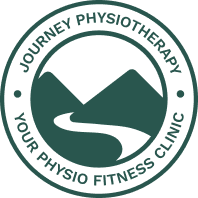My thoughts on improving flexibility for your sport.
Each sport has unique demands. Certain sports require greater strength, rugby, while others more flexibility, gymnastics.
As you take stock of your abilities and assess your training needs you may find you lack in certain areas. I am strong advocate for leveraging coaches, they can help identify weaknesses in your game and a strength coach or physio can help you develop them (this is of course skills that are not tactical / skill based – which is of course better offered by the coach themselves).
I write primarily about strength training in my blog as it is an area I am comfortable coaching and for the sports I deal with it is often a nice adjunct to training in your sport. However, it is not uncommon for someone to need flexibility training.
In a sport like rock climbing strength can be superseded by flexibility. If you can’t get the leg into position you can’t express your strength. A similar analogy could be used for squash using aerobic fitness. If you don’t have the aerobic fitness to express your skill in the fourth and fifth game you may need to work on fitness.
I will use rock climbing as an example in this post but you could easily replace it with squash. When working with athletes I don’t make any recommendations of additional training before I ensure they are putting in enough reps of the sport itself. I am hesitant to add more stretching (or any adjunct) if they simply aren’t climbing enough. If however the person is climbing enough, and would see greater benefits from adding a day of stretching over a fourth or fifth day of climbing we would consider a few things.
What specific movements have been identified as limitations?
What joints and muscles are involved in this movement?
When can the practice be done? How likely will it get done?
How can it be measured?
It makes sense to treat flexibility in much the same way we treat strength training. First things first – before getting into any detail the plan must be adhered to. As long as someone is doing flexibility work every day they will see gains. Once the importance of adherence is understood the following steps can be implemented.
Practice moves similar to those which are difficult when climbing – stretch the hips, shoulders, arms into positions and time frames similar to climbing. Be as sport specific as possible.
Practice general slow stretching: a variety of yoga poses, classic running stretches, anything that feels right:). If the lower body needs more work, focus on general lower body stretches.
I take the same approach in strength training. Combine the primary lifts with a few movements that are relevant to a particular sport, ie injury areas or areas in need of greater strength.
Finally find a way to measure it. Use a toe touch test or video a certain pose and compare yourself in the coming months.
We don’t expect strength to express itself fully until a few months of committed practice, so don’t expect anything different with flexibility work. It will take time for the nervous system to learn its new limitations. Certain movements may always be a challenge because of boney morphology but this shouldn’t stop some adaptation from occurring.
Finally do I believe flexibility needs to be a bigger part of a squash training program. It depends. I think for most people skill development, aerobic fitness, speed, and strength are more important. But in some cases where a clear physical limitation is hindering skill development or all other training methods are exhausted, flexibility training might be great. Thanks for reading.
Dave
